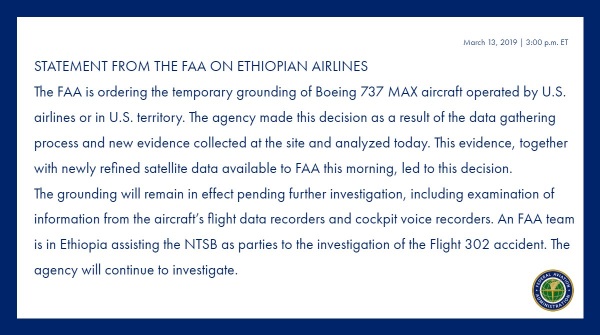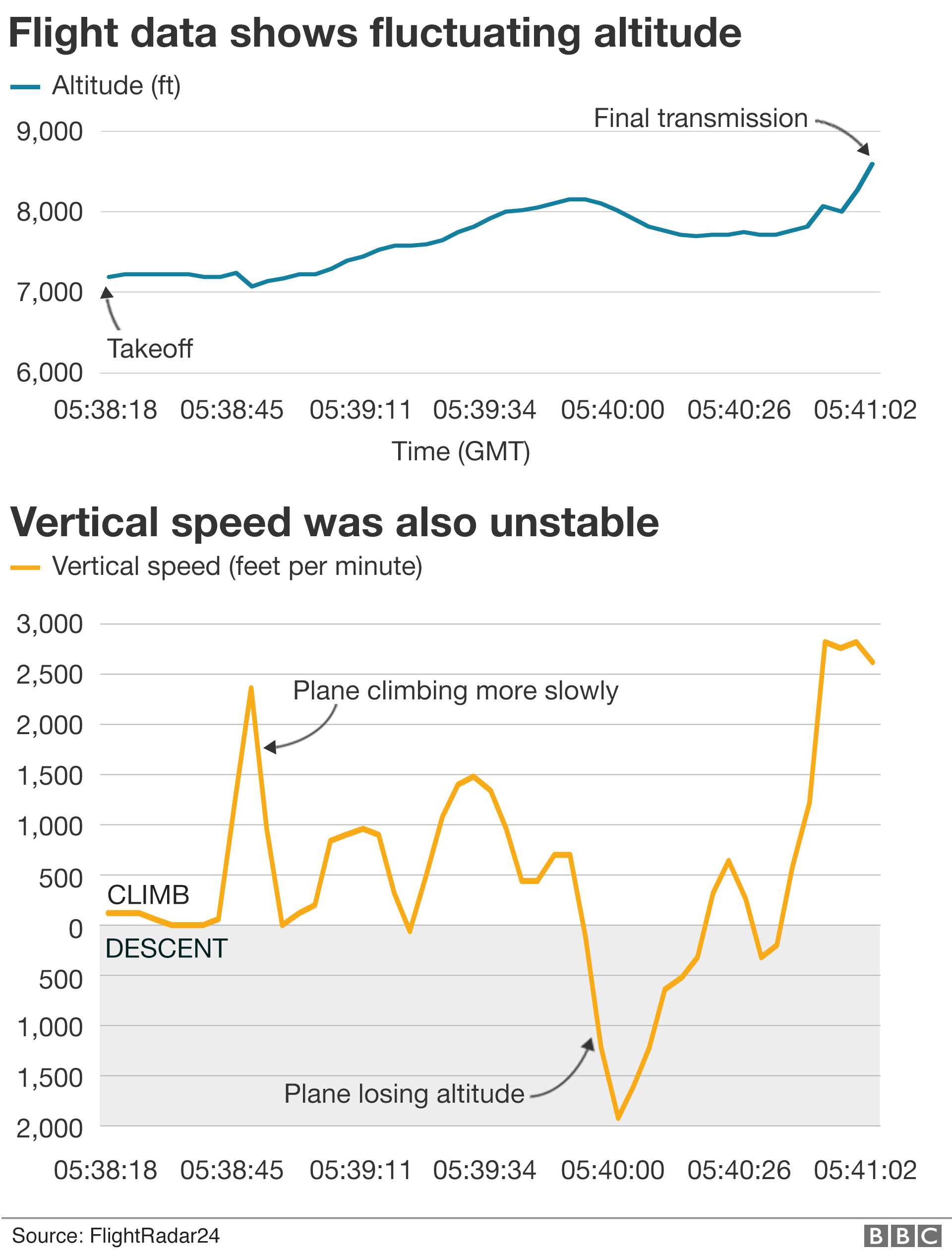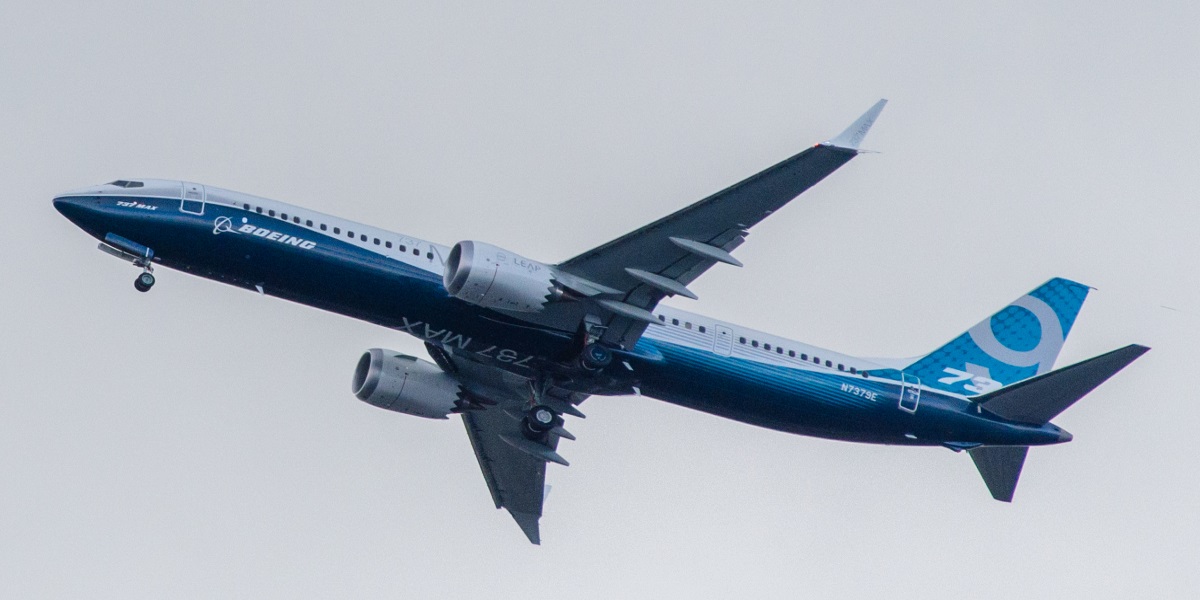Following the aftermath of the fatal crash of Ethiopian Airlines few days ago Boeing announced to ground entire global fleet of it’s Boeing 737 Max aircraft after the new “data” from the investigation site.
Ethiopian Airlines flight ET302 crashed near Addis Ababa on Sunday, 10th March, killing all 157 people on board. The aircraft was B737 Max 8 type that suffered similar fate in Lion Air crash last October in Indonesia. Safety concern arose as this was the 2nd fatal crash involving this new aircraft type in space of few months with similar circumstances.
Even though Boeing and FAA originally declared their faith in 737 Max aircraft type, however huge number of airlines grounded it’s own 737 Max 8 aircraft due to precaution. However, today was a breakthrough in the investigation using the satellite imagery by the company Aieron LCC that suggested the link in the flight paths of both Lion Air crash and Ethiopian Airlines crash.
Therefore, after the new data from the investigation, Boeing decided to ground it’s entire global fleet of 371 Boeing 737 Max aircraft.

The FAA said: “The grounding will remain in effect pending further investigation, including examination of information from the aircraft’s flight data recorders and cockpit voice recorders.”
Earlier today, Canada’s transport minister Marc Garneau said:
“As a result of new data that we received this morning, and had the chance to analyze, and on the advice of my experts and as a precautionary measure, I issued a safety notice.
“This safety notice restricts commercial passenger flights from any operator of the Boeing 737 MAX 8 or MAX 9 variant aircraft, whether domestic or foreign, from arriving, departing or overflying Canadian air space.
“This safety notice is effective immediately and will remain in place until further notice.”
Flightradar24, an air traffic monitor, said the Ethiopian Airlines plane’s “vertical speed was unstable after take-off” as shown on the diagram:

Also, there were other reports of 2 US pilots reporting the Boeing 737 Max 8 anti-stall issue last November which is also the main suspect in the Lion Air crash.
The anti-stall feature is created in order to prevent the plane from pointing too high at an angle where it could lose it’s lift. It is also a brand new feature to the 737 Max family.
However, it appears that in turn it forces the airplane’s nose down and in both cases in USA, pilots had to intervene to stop the plane from descending.
After the Lion Air crash, Boeing issued a safety notice on what to do regarding erroneous readings from the sensor, which sends out information about what angle a plane is flying at.
Could it be that Boeing’s anti stall system played a role in this crash?
We will keep you informed about further information.







